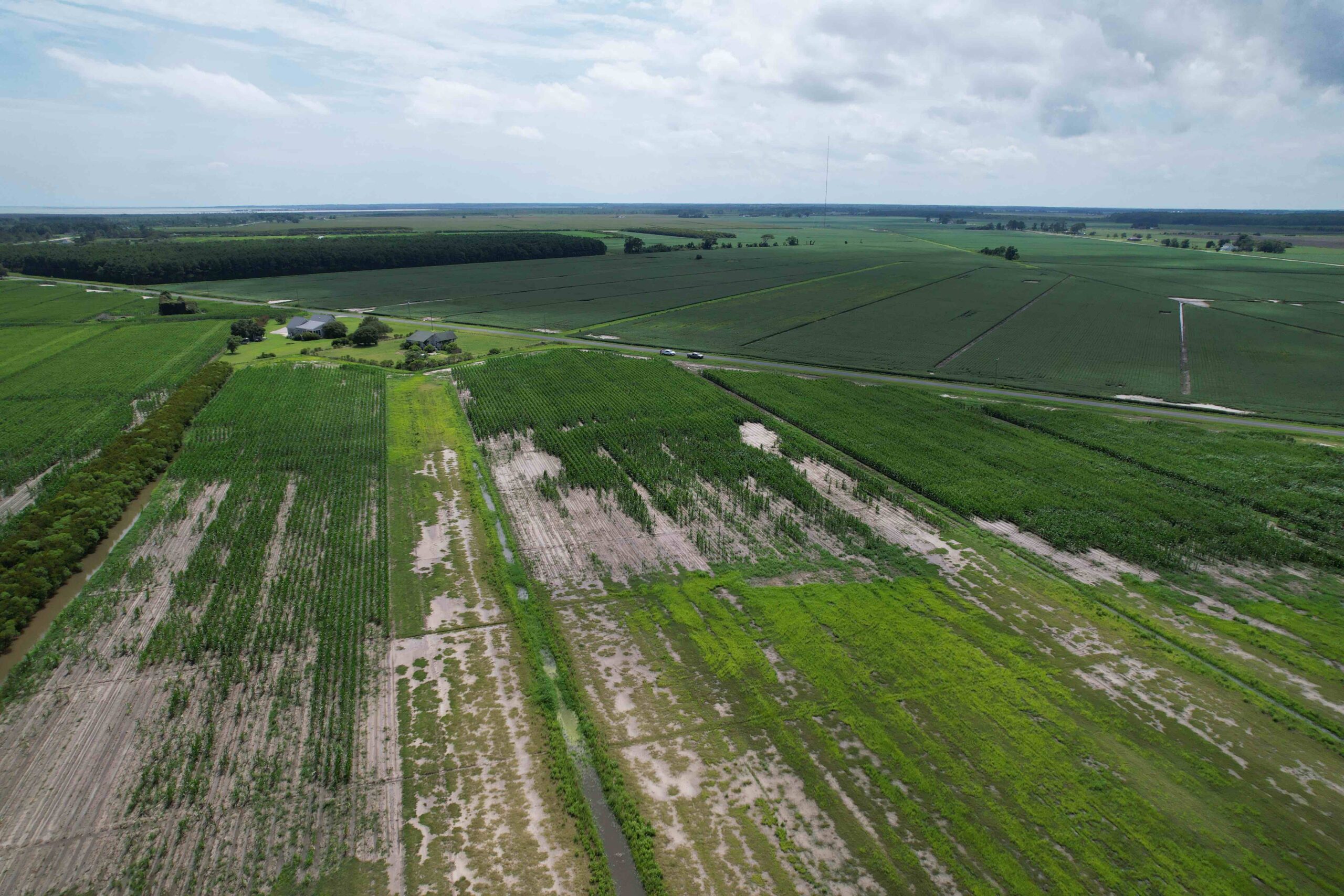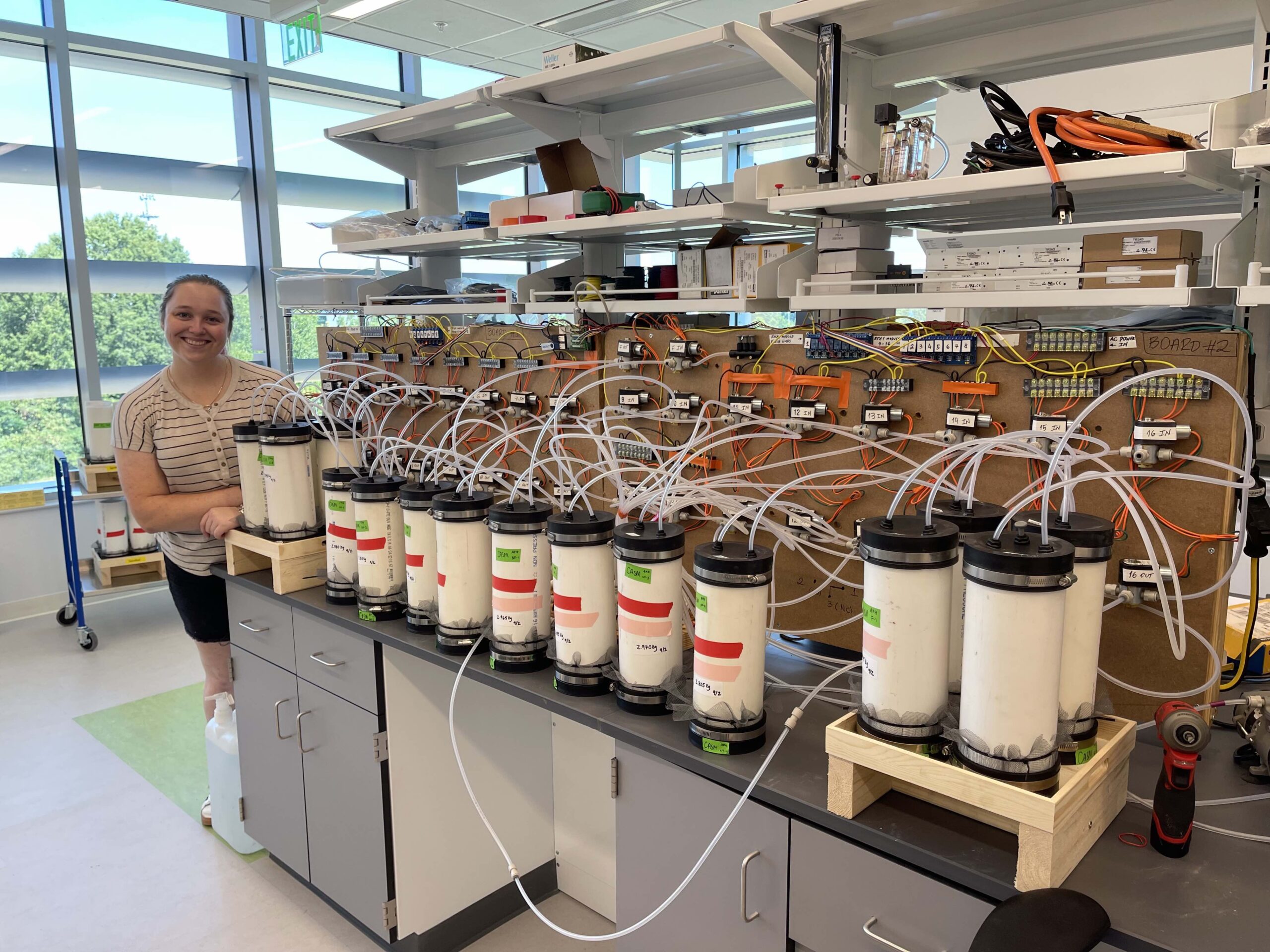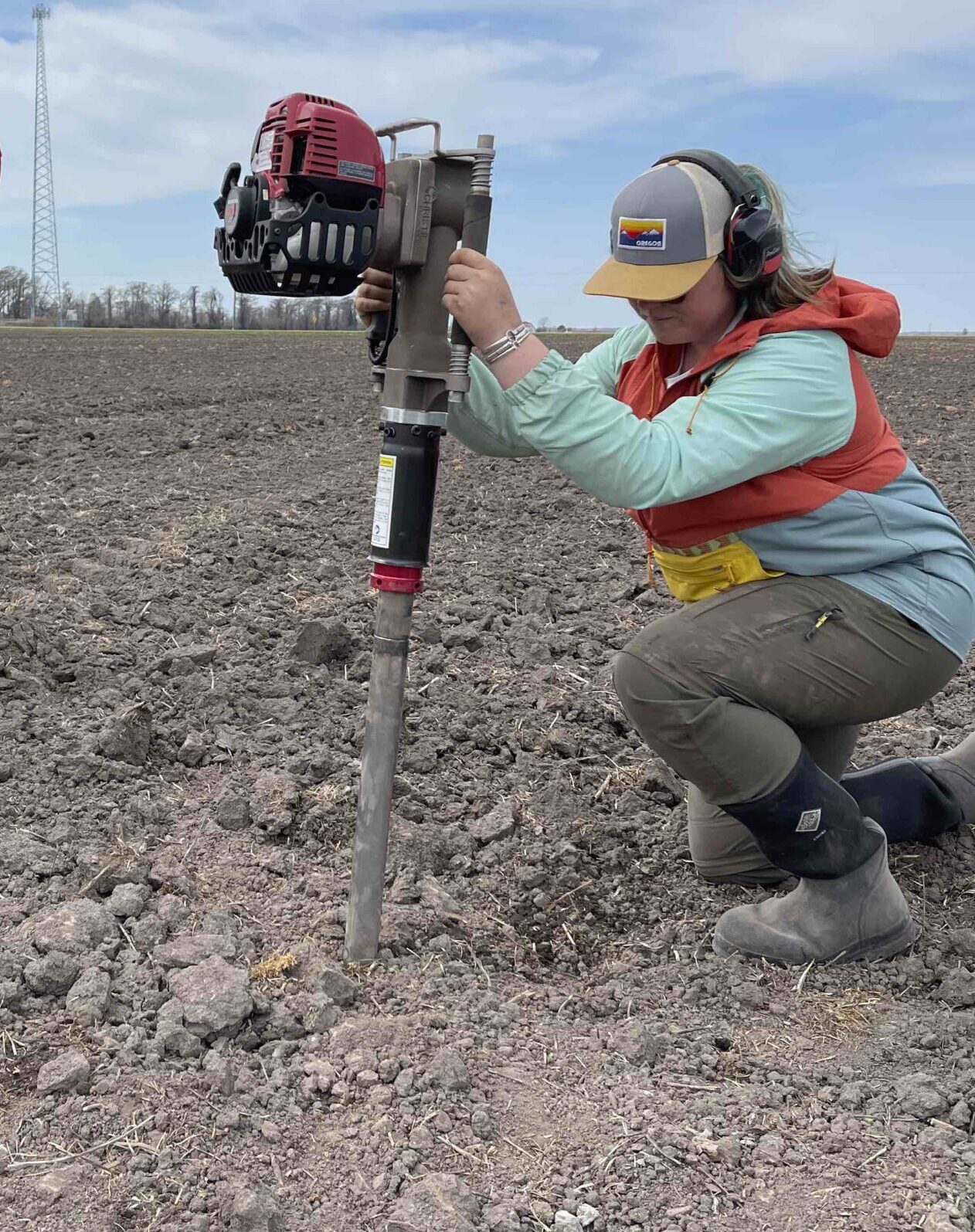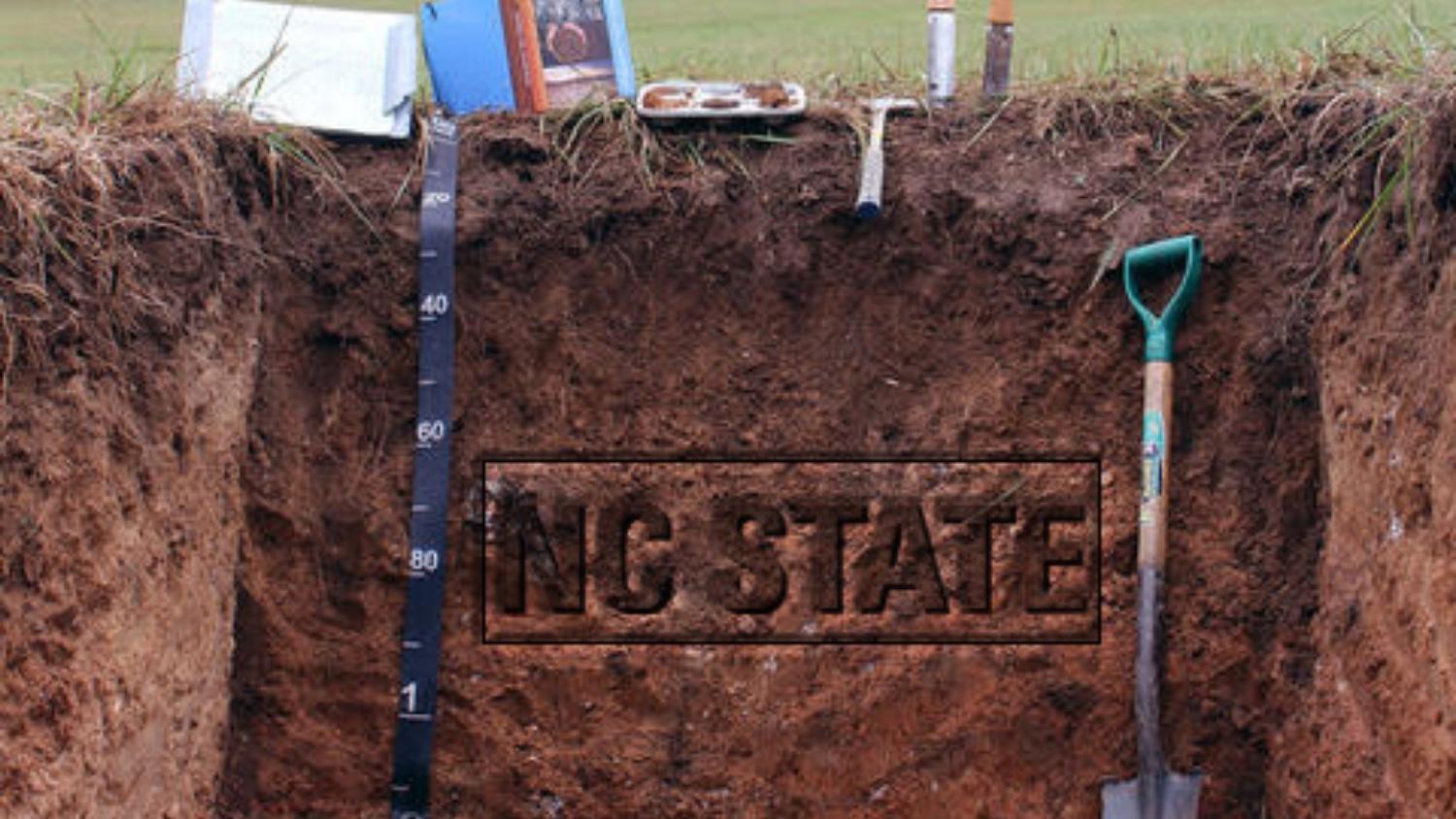
Soil is the most used but undervalued natural resource on Earth. Every time we stand up, sit down, wash, eat and flush, we leverage soil as a structure, filter and medium for life. But even natural forces, like salt, can change its viability.
NC State soil science graduate student Julia Janson was awarded one of The Story Exchange’s 2023 Women in Science Incentive Prizes for her research on saltwater-affected soils.
The Problem with Coastal Surge
Janson came to NC State’s Department of Crop and Soil Sciences to assist with carbon research for the department’s Climate Adaptation through Agriculture and Soil Management group.
“Salty soil is a huge agricultural and environmental problem,” Janson said. “It affects over 2.5 billion acres of the planet, including thousands of agricultural acres in North Carolina. Many of these once productive coastal soils are now unproductive because of increasing salinity.”

Salt accumulates in some agricultural areas because of fertilizers and water evaporation. These areas can often be treated by flushing with freshwater. But much of NC’s prime agricultural land is in low-lying coastal areas where storm surges and rising sea levels regularly introduce saltwater.
Janson’s work aims to help NC farmers quickly identify affected field areas and determine their best land use.
“Some people think farmers in these affected areas should just abandon their fields — just give up because it’s not going to change. But these are multi-generational farmers stewarding family land. We want to help them make informed decisions and protect their usable land.”
A Tipping Point for Flooded Soil?
The group’s research aims to answer two major questions: “How does salt impact soil properties?” and “How can growers quickly adapt to changes in soil salinity?”
Their lab work has revealed an interesting juncture in saltwater flooding. In a project unaffectionately nicknamed “How to Kill a Soil,” they simulated chronic seawater flooding on a scale from 1 to 2 floods per year up to 10 times per year.
“Ecosystems are resilient and can rebound from occasional flooding,” Janson said. “We wanted to know if there was a frequency tipping point beyond which the system couldn’t rebound. After flooding and sequentially sacrificing 32 soil columns over a year, we found a significant drop in soil carbon between 4 and 6 flooding events.”

Agriculturally, salt impacts crops through physical and chemical changes in the soil.
High-salt soils accelerate carbon loss, resulting in a threefold increase in greenhouse gas emissions. Salt also destroys soil structure, causing surface crusting that can affect seed emergence.
“Sodium ions are big. They break up clay particles, changing the soil’s pore space, which leaves a legacy of more flooding and reduced productivity.”
Rapid Responders
Most farmers rely on annual soil testing for fertility management recommendations and salinity measurements. However, sending the samples and waiting for results can take several weeks or months.
“We correlated the field salt measurements to those from routine soil analyses. Now farmers and agents can quickly map salt-affected field areas for remediation, alternative crops or retirement.”

Janson worked with lead CASM researcher and advisor Matt Ricker to develop a rapid response protocol for Extension agents and growers to measure soil salt content and make in-season decisions quickly. That work is now coming to fruition.
“This summer, a resource list to assemble test kits will be available for county agents and growers who want to run tests in-house,” Ricker said. “The field kits include portable electrical conductivity meters, plastic beakers, volumetric cylinders, syringes, stir rods, and distilled water and cost $150 to $1000, depending on the setup.”
The group expects coastal Extension agents, like Hyde County agent Andrea Gibbs, to find the field kits valuable in high-stakes moments.
After an inundation event, we often submit soil samples to the state lab, but the reports are easily overlooked in the whirlwind of post-storm field activities. So, I am excited about the kits developed by the CASM team!” Gibbs said. “It is crucial for farmers and Extension to have the capability to assess soil salinity directly in the field to facilitate timely management decisions. We can measure water salinity instantly, so measuring both water and soil as well as other storm data will help us learn more about how storms damage our productive soils.”

Technology For The Future

Advisor Matt Ricker says Janson’s role in the CASM group’s research has laid the groundwork for new on-farm technology.
“Julia’s work utilizes sophisticated electromagnetic induction (EMI) sensors to map soil salinity levels across farm fields. These sensors have been used in varied agricultural applications but rarely to map saltwater intrusion.”
Ricker says that now that these sensors are becoming commercially available to farmers, they can have a clearer picture of saltwater impact in real-time.
“One of Julia’s major contributions to the study of coastal agronomy is collecting hundreds of targeted soil samples that confirmed EMI readings of electrical conductivity are indeed a result of sodium and other salts in the soil,” Ricker said. “Now, we can convert farm soil readings to North Carolina Department of Agriculture benchmarks that predict crop damage. This technology will become a valuable precision agriculture tool to track coastal soil salinization when and where it occurs.”
Reforesting for Better Buffers
Despite its recent limelight, saltwater intrusion isn’t a new problem. Coastal farmers have been slowly retiring frontline salt-affected fields for decades, often planting trees or selling land for duck hunting. Both practices leave remaining inland fields at risk. Janson says buffering is a better way.
“Saltwater marshes and wetlands are fantastic barriers,” Janson said. “But many of these retired areas were planted with freshwater plant species that can’t survive in these high salt, low oxygen environments, creating the ghost forests we see today. Properly reforesting with salt-tolerant native species that thrive in wetland conditions is the best way to rebuild this invaluable land and protect inland fields from accelerated flooding.”
Saltwater Research on the Rise
The Story Exchange is a non-profit online platform seeking to elevate women’s voices in media and science. In 2021, they launched the Women in Science Incentive Prize to grant funds to female scientists addressing climate change.
Janson has firm plans for the award funds. She wants to incorporate other aspects of soil science into the CASM project by collaborating across subdisciplines.
“Throughout my graduate work, I’ve seen how soil carbon changes, yet we often don’t know why. I’ve realized that it’s often the ecology of soil, but the microbiology is often ignored as a variable. I want to use this funding to research microbial community shifts in North Carolina’s saltwater flooded soils.”

She says microbiology is traditionally viewed as a lab job. But to her, it’s more.
“The soil microbiome is the active part of the soil system, whereas others are generally more static. You’ve got to study and apply it in the field. I hope my research can make a difference in understanding the consequences of climate change and how we can better manage and understand the impacts of saltwater intrusion on soil carbon dynamics.”
Janson expects to complete her Ph.D. in 2024 and plans to continue working in soil science research and outreach.
Global Graduate Impact
The Department of Crop and Soil Sciences is home to a dynamic group of over 100 graduate students who perform research and pursue their passions for environmental science and agriculture.
“Graduate students like Julia are mission-critical to our research, leading to innovation, discovery, and impactful extension programs that promote sustainable and profitable agricultural systems,” said department head Jeff Mullahey. “But they also undergird our undergraduate academics as teaching assistants for our hands-on, experiential learning labs, resulting in an enhanced learning environment for our students. Every part of our system is better because of them.”
Want More Discovery?
Crop and Soil Sciences’ research impacts farmers, students, and citizens of the world. Follow how our discoveries affect agriculture and environmental science by joining our weekly newsfeed.
If you are a student interested in climate adaptation or soil science, investigate our undergraduate and graduate degree programs, including a deep dive with our soil degree ebook. Then, join us for a guided email tour of our department and university.
Protecting NC’s agriculture and environment through stewardship is just part of how we are growing the future.
